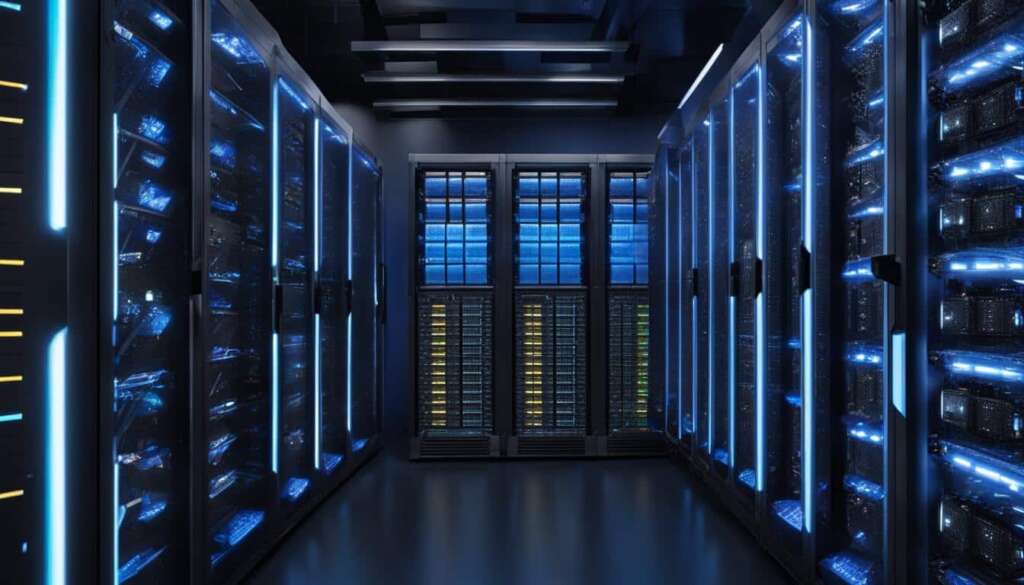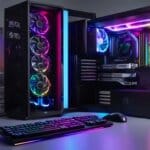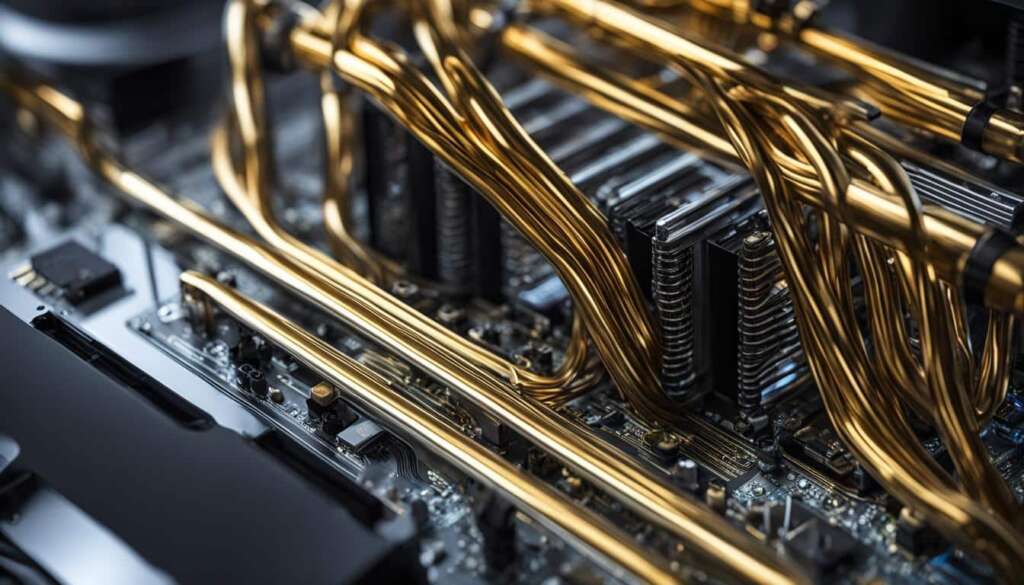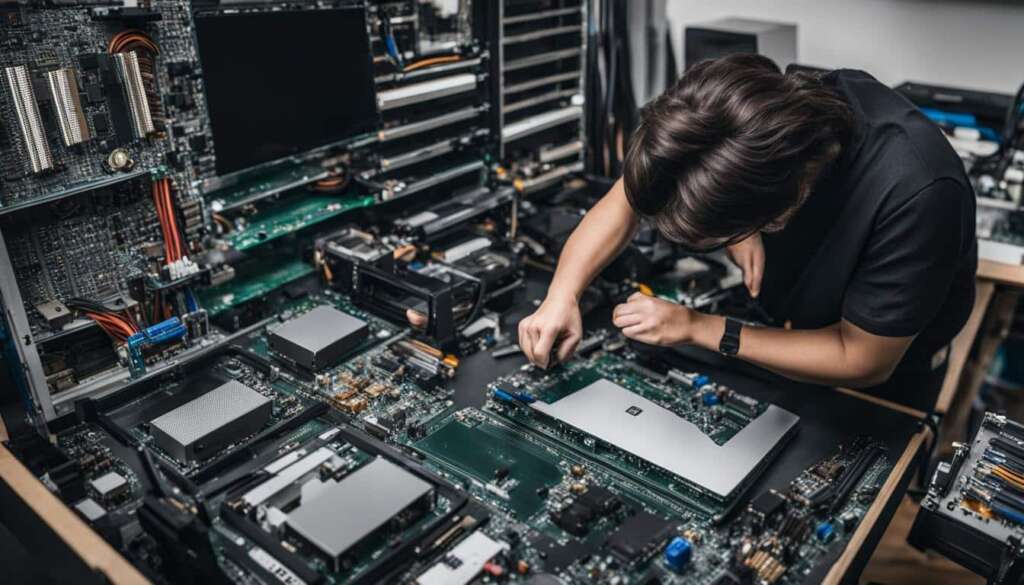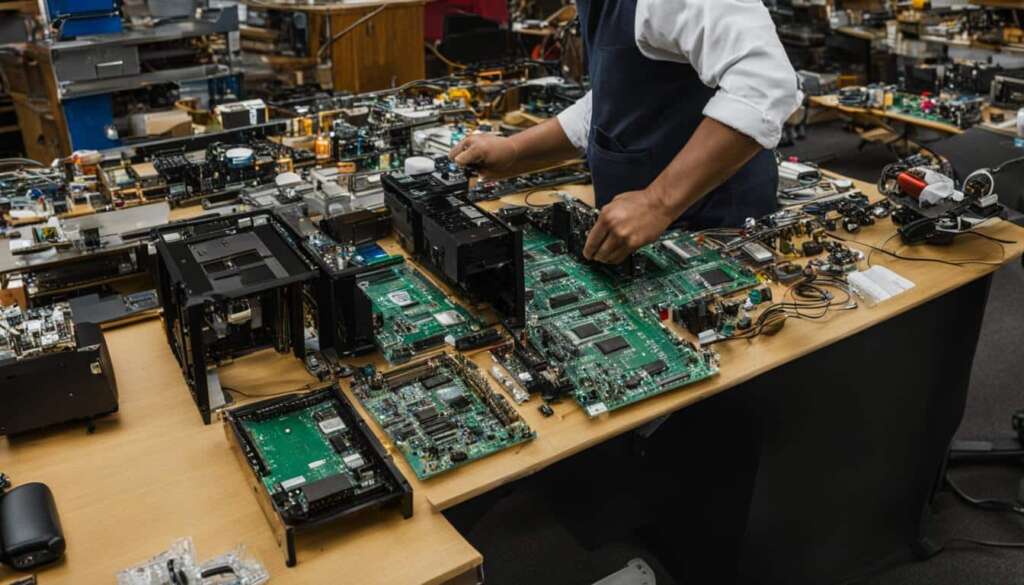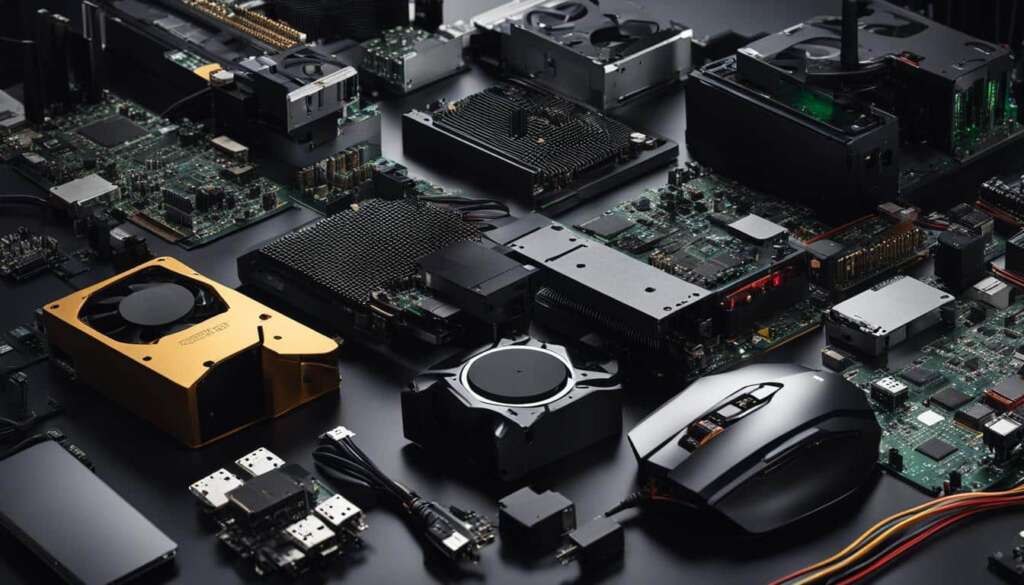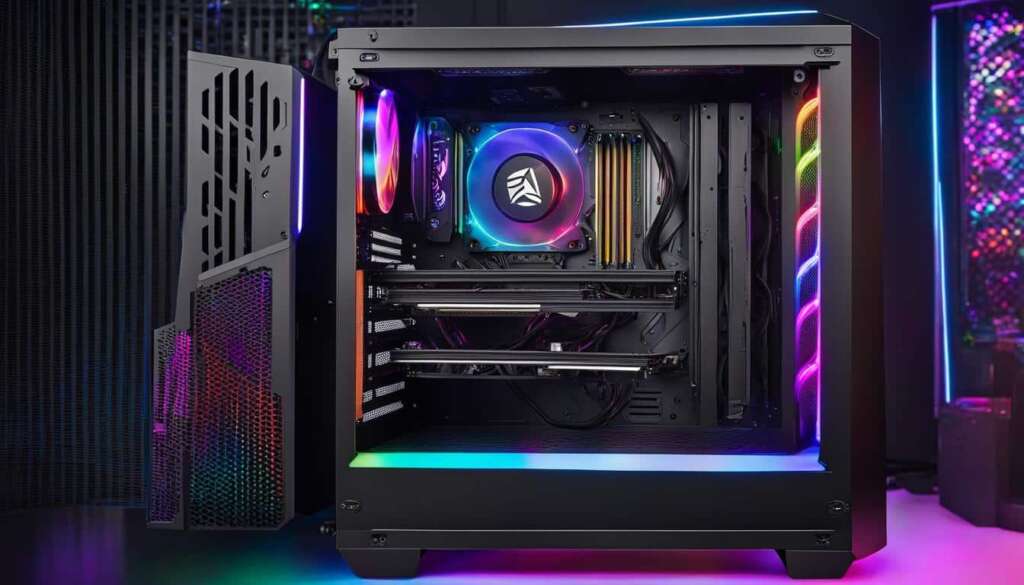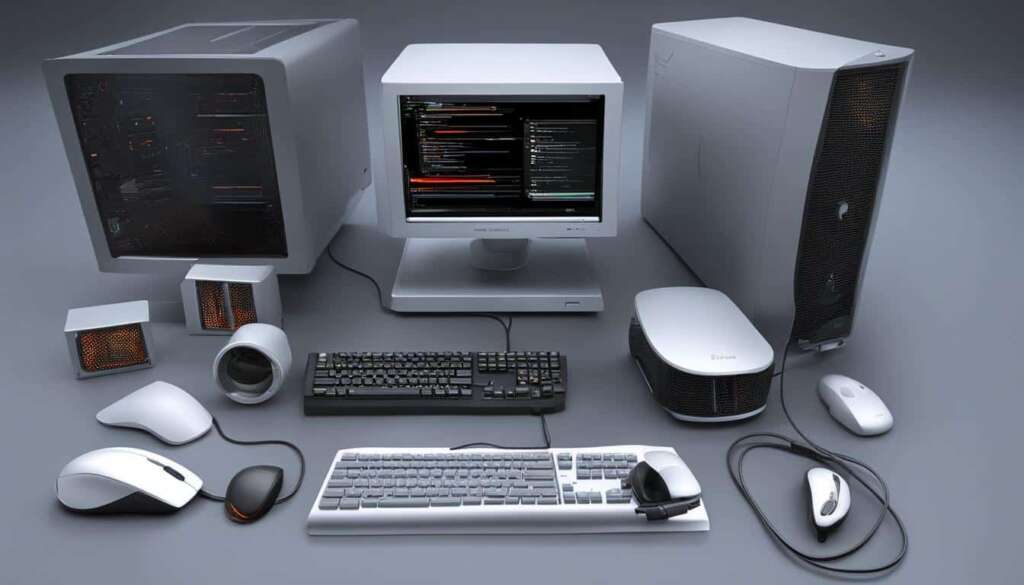Table of Contents
Data centre operators are increasingly focused on improving server energy efficiency as a way to optimize overall data centre efficiency. Key components that impact server energy consumption include power supply, fans, CPU, memory, hard drives, I/O cards and ports, and other motherboard components. It is important to consider the actual power draw of a server, rather than relying solely on the nameplate rating. Power supplies and server fans are significant consumers of power and investing in more efficient options can result in substantial energy cost savings. Additionally, optimizing the use of CPUs and memory can improve overall server performance and efficiency.
Understanding the Impact of Server Utilization
In order to optimize the efficiency of your computer server, it is important to understand the impact of server utilization. Server utilization refers to the percentage of time that a server is actively performing work or processing data. In most enterprise environments, server utilization is typically low, ranging from 10% to 15% on average. This means that a significant portion of server resources are underutilized, resulting in wasted energy and reduced performance.
Workload optimization is a key strategy for improving server utilization. By analyzing the specific workloads running on your server and optimizing their distribution, you can achieve higher utilization rates and minimize resource waste. Virtualization is also a crucial tool for maximizing server utilization. By virtualizing multiple servers onto a single physical server, you can consolidate workloads and increase overall utilization. This results in better resource allocation and more efficient use of server resources.
To further optimize server utilization, power management features play a vital role. Dynamic voltage and frequency scaling is a power management technique that adjusts the performance of the CPU based on the workload. This ensures that the CPU operates at the optimal performance level while consuming the least amount of power. Power management can also be applied to other components such as memory, storage, and network devices, reducing their energy consumption during periods of low activity.
“Optimizing server utilization can lead to significant cost savings, as well as improve performance and reduce downtime.”
| Server Utilization | Benefits |
|---|---|
| Higher utilization | Optimal resource utilization |
| Reduced resource waste | Minimized energy consumption |
| Improved performance | Enhanced server responsiveness |
| Lower downtime | Reduced service interruptions |
By understanding the impact of server utilization and implementing strategies such as workload optimization and virtualization, you can maximize the efficiency of your computer server. This not only results in cost savings through reduced energy consumption but also improves overall performance and reduces downtime. Power management features further enhance server utilization by optimizing component performance based on workload, ensuring that your server operates at its best while consuming the least amount of energy.
The Importance of Power Management in Servers
Power management plays a critical role in optimizing server efficiency and reducing energy consumption. By implementing power management features, such as processor performance states (P-states) and inactive states (C-states), organizations can achieve significant energy savings during periods of server downtime. The use of power management profiles and tuning P-states, C-states, and component settings can help strike the right balance between energy savings and performance requirements. Enabling power management features on servers, as well as other IT hardware, can contribute to cost savings and help organizations meet their sustainability goals.
In addition to energy savings, power management also helps reduce server downtime. When servers are not in use, power management features can intelligently lower power consumption while maintaining the ability to quickly resume full performance when needed. This not only saves energy but also extends the lifespan of server components by reducing their overall workload and thermal stress.
According to a recent study by the National Renewable Energy Laboratory, power management features can result in energy savings of up to 30% in data centers. This translates to significant cost savings and a reduced carbon footprint for organizations.
Furthermore, power management in servers goes beyond just reducing energy consumption. It also enables IT administrators to monitor and control power usage, allowing them to identify potential performance issues and optimize server resources. By leveraging power management tools and implementing best practices, organizations can ensure that their servers operate at peak performance while minimizing energy wastage.
Example Table: Power Management Profiles
| Profile | Power Consumption | Performance |
|---|---|---|
| High Performance | High | Maximum |
| Power Saver | Low | Reduced |
| Automatic | Variable | Optimized |
Tips for Optimizing Server Performance
When it comes to maximizing the performance of your computer server, there are several key tips that can help you optimize its efficiency. By implementing these strategies, you can ensure that your server runs smoothly and delivers excellent performance for your business.
Optimize Your Applications
One of the first steps in optimizing server performance is selecting the right applications. Choose applications that are specifically designed for server optimization, as they can significantly improve efficiency. Additionally, consider setting up a quick reverse proxy, which serves cached files directly from memory. This can help improve server speed and reduce page load times, resulting in a better user experience for your customers.
Caching and Database Optimization
Enabling caching is another effective way to enhance server performance. By caching frequently accessed files, you can reduce site load time and improve overall performance. Additionally, consider defragmenting your database tables and optimizing server settings. Adjusting database settings and monitoring server performance can further boost efficiency and ensure optimal operation.
Fix DNS Query Response Time
Inefficient DNS query response time can negatively impact server performance. By addressing this issue, you can improve page load times and enhance overall server efficiency. Implementing measures to fix DNS query response time, such as optimizing DNS settings or using a distributed DNS cluster, can help achieve faster response times and ensure smooth server operation.
| Optimization Tips | Benefits |
|---|---|
| Select the right applications | Improved efficiency and server speed |
| Enable caching | Reduced site load time and improved performance |
| Optimize database and server settings | Enhanced efficiency and optimal operation |
| Fix DNS query response time | Faster page load times and improved server performance |
Optimizing server performance is crucial for ensuring that your computer server operates at its best. By following these tips and implementing the necessary optimizations, you can enhance server speed, improve efficiency, and deliver an exceptional experience for your users.
Maximize the Benefits of Power Management
When it comes to optimizing efficiency with your computer server, implementing effective power management settings can yield significant benefits. Power management plays a crucial role in reducing energy consumption and achieving maximum energy savings while maintaining performance requirements. By understanding and utilizing C-states and P-states in server configuration, you can optimize CPU performance and minimize power demand during idle periods. Tuning P-states and C-states can help strike the right balance between energy savings and performance, ensuring that your server operates efficiently at all times.
Another important aspect of power management is component-level idle power management. By isolating and turning off unnecessary components, you can further reduce power consumption. This approach involves identifying and deactivating components that are not being actively used, such as unused network ports or I/O cards. Implementing power management at the component level allows for more targeted energy savings and enhances overall server efficiency.
“By utilizing power management tools and optimizing power management settings based on workload, organizations can achieve maximum energy savings while maintaining performance requirements.”
Maximizing Power Management Benefits
Maximizing the benefits of power management requires a holistic approach. In addition to tuning P-states and C-states, organizations should also make use of power management tools to monitor and optimize server performance. These tools provide valuable insights into energy consumption patterns and can help identify areas for further improvement. By analyzing server workloads and adjusting power management settings accordingly, organizations can achieve significant energy savings.
Implementing a distributed DNS cluster is another strategy to enhance server performance while leveraging power management. By distributing the DNS workload across multiple servers, organizations can improve DNS query response time and reduce the burden on individual servers. This not only enhances server efficiency but also contributes to faster page load times and improved overall performance.
Overall, maximizing the benefits of power management requires a comprehensive approach that encompasses both server-level and component-level optimizations. By utilizing power management tools, tuning P-states and C-states, and implementing strategies like distributed DNS clusters, organizations can achieve substantial energy savings, improve server performance, and meet their sustainability goals.
| Power Management Benefits | Power Management Settings | Energy Savings |
|---|---|---|
| Optimized CPU performance | Tuning P-states and C-states | Significant reduction in power demand |
| Reduced power consumption during idle periods | Component-level idle power management | Targeted energy savings |
| Improved DNS query response time | Distributed DNS cluster implementation | Enhanced server performance |
Conclusion
Optimising efficiency with your computer server is crucial for enhancing overall data centre efficiency and reducing energy costs. By focusing on key components such as power supply, fans, CPU, and memory, and implementing power management features, organisations can achieve significant energy cost savings.
Additionally, optimising server utilisation, adopting best practices for server performance, and maximising the benefits of power management can further enhance server efficiency and performance. By following these tips and implementing the necessary optimisations, businesses can boost productivity, reduce costs, and meet sustainability goals.
By investing in server optimisation, organisations can not only improve server efficiency but also realise long-term energy cost savings. Taking steps to ensure server components are energy-efficient, utilising power management features, and adopting best practices for server performance can all contribute to a more efficient and cost-effective data centre.
FAQ
What are the key components that impact server energy consumption?
The key components that impact server energy consumption include power supply, fans, CPU, memory, hard drives, I/O cards and ports, and other motherboard components.
Why is it important to consider the actual power draw of a server?
It is important to consider the actual power draw of a server, rather than relying solely on the nameplate rating, as power supplies and server fans are significant consumers of power and investing in more efficient options can result in substantial energy cost savings.
How can optimizing server utilization lead to cost savings?
Optimizing server utilization can lead to significant cost savings as it improves performance, reduces downtime, and allows for better resource allocation. Server utilization is typically low, ranging from 10% to 15% on average in enterprise environments.
What power management features can help optimize CPU performance based on workload?
Power management features such as dynamic voltage and frequency scaling can help optimize CPU performance based on workload. Additionally, power management can be applied to memory, storage, and network components to further reduce energy consumption.
How can power management contribute to energy savings during periods of server downtime?
By implementing power management features such as processor performance states (P-states) and inactive states (C-states), organizations can achieve significant energy savings during periods of server downtime.
What are some tips for optimizing server performance?
Some tips for optimizing server performance include selecting the right application for server optimization, setting up a quick reverse proxy, enabling caching, defragmenting database tables, and optimizing server settings.
How can tuning P-states and C-states optimize CPU performance and reduce power demand?
Tuning P-states and C-states can optimize CPU performance and reduce power demand during idle periods. It is also important to consider component level idle power management, which can further reduce energy consumption by isolating and turning off unnecessary components.
How can organizations achieve maximum energy savings while maintaining performance requirements?
Organizations can achieve maximum energy savings while maintaining performance requirements by using power management tools, optimizing power management settings based on workload, and implementing a distributed DNS cluster to enhance server performance.
How can optimizing efficiency with a computer server benefit businesses?
Optimizing efficiency with a computer server can enhance overall data center efficiency, reduce energy costs, boost productivity, and help businesses meet their sustainability goals.

